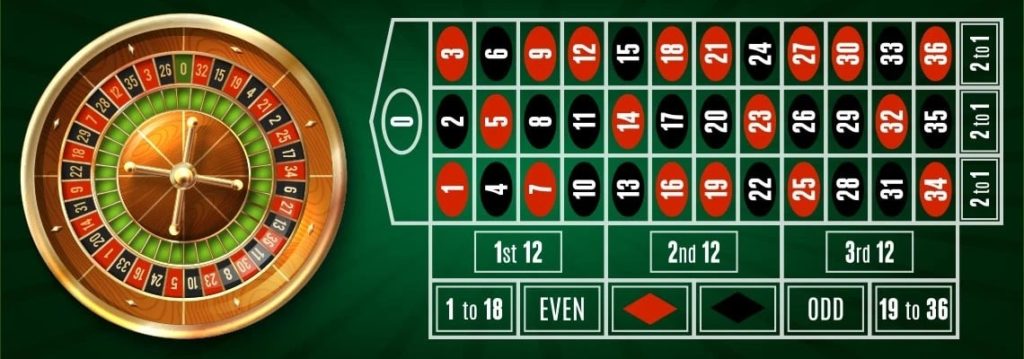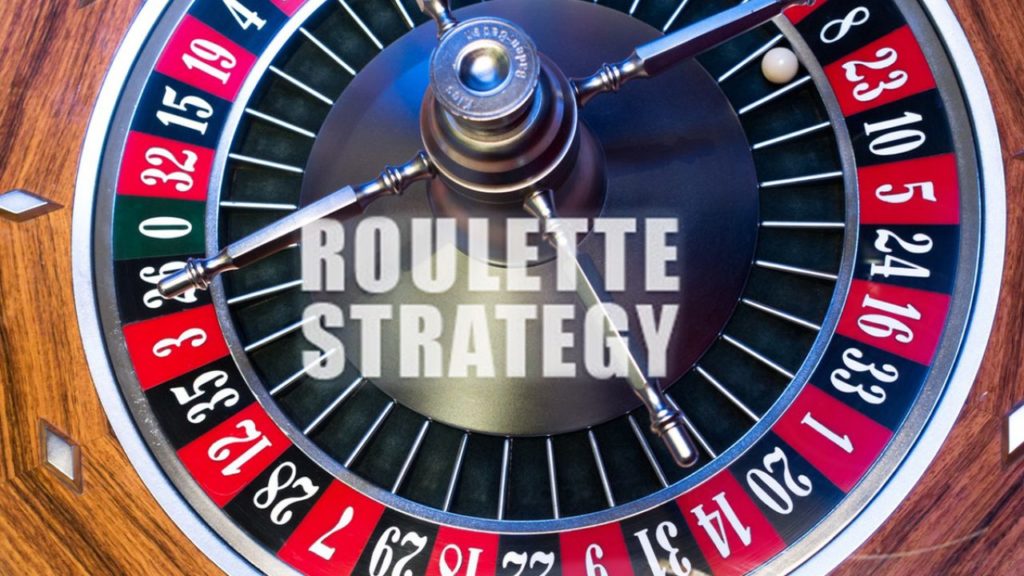For many years, every roulette strategy has been researched and passed down through generations since individuals are always looking for new methods of making money at it. Since the earliest days of gambling, players have sought out new betting strategies for increasing their odds of winning while also increasing their bankroll. This is how the roulette strategies were created with the expectation that one of them would be a successful technique.
Everyone has at least once played a game of chance at some point in their lives, whether it was for fun or to win money. If you’re going to gamble, then you better use some sort of strategy in an effort to increase your odds of earning money. Even casual gamblers can benefit from online betting strategies to enhance their experience.
The truth is that there is no way to beat the casino with any kind of strategy. Casinos would have been long gone if there had been. There is no way to predict the outcome of any of the games available in land-based or online casinos. Because of this, there is no plan that is certain to help you win. Using the outlined tactics, you can increase your winning possibilities while minimizing your financial losses.
Everyone has a strategy that works for them, regardless of their level of experience. The only thing you need to do is familiarize yourself with the various online betting strategies. Before you make a decision about whether or not to use a roulette strategy, we’ve laid out all the information you need to know on this page.
Gambler’s Fallacy
In the last century, the Monte Carlo fallacy, or the Gambler’s Fallacy, was the most widely known misconception. People believe that what happened before can affect what happens now. An assumption that when something happens more frequently, it is less likely to happen again in the future (or vice versa). This is a blatant fallacy. When it comes to games of chance, there is no way to know what will happen. It’s absolutely out of our control.
As in the case of a coin toss. Heads or tails are the only two options. You can’t tell which one will happen, nor you can predict the outcome. Five “tails” in a row doesn’t guarantee a “heads” result the sixth time around. There is no connection between what happened before and what will happen next.
In Monte Carlo, France, in 1913, the most famous case of the gambler’s fallacy was recorded. This is why the fallacy is called the Monte Carlo fallacy. For 26 consecutive spins, the roulette ball landed on the colour black, resulting in millions of dollars in losses for those who bet that the ball would land on red after a few black numbers. That did not occur a total of 26 times.
It’s important to recognize the gambler’s fallacy and avoid it at all costs.
What is a House Edge?
Another important concept to grasp is that of the home boundary. One of the reasons why no approach is ever flawless is because of this. The term “house edge” refers to the casino’s mathematical advantage over you. It is the discrepancy between the genuine probability of a hand winning and the return promised by the casino. The casino always wins because of the house edge. Yes, there will be some wins and some money to be made. Despite this, the casino will always come out on top in the long run. Because of the house edge, the casino has a better chance of winning.
The house edge is an essential part of the game. Each game has a different house advantage, and each variation of the game has a different house edge.
Because of the American roulette’s double 00, the house edge on European and American versions of the game differs. The double 00 decreases the likelihood that the ball will land on the player’s chosen number. In European roulette, the house has a 2.7027% advantage, whereas, in American roulette, the casino has a 5.2632% advantage.
The house edge varies in Baccarat depending on whether you wager on the banker, player, or a tie result in order to win. If the house edge is lower, the player has a better chance of winning.
Types of roulette strategies
People wanted a way to categorize the many various roulette strategies that have been developed throughout the years. Because of this, we were able to separate all of the online strategies into two broad categories. Strategies can be progressive or nonprogressive depending on how they are implemented. Everybody has the option of picking a method and learning the strategies that fit under that umbrella. More information on the various tactics and strategies can be found in the following sections.

Progressive Roulette Strategy
All roulette strategies that necessitate changing the stakes are included in this category. As a result, a progressive strategy requires you to increase or decrease the amount of your wager depending on the results of your previous bet. Stakes can be raised or lowered based on the chosen system.
There are negative or positive progressions.
The positive progression requires you to raise your stakes when you win, and restart the progression or loser your stake when you lose. When you’re losing, positive progression tactics minimize your losses to a minimum, making them less dangerous. It also increases your profits if you have a run of good luck.
In contrast, the negative progression technique demands increasing stakes when you lose, and decreasing stakes when you win or resume the process. In the event of a prolonged losing streak, you could lose a significant amount. Certainly, if you hit that one winning streak, you’ll be able to recoup all of your losses as well as make a profit. As luck would have it, there is no way to know when it will happen. As a result, you have a lower probability of winning, and the house has a significant advantage.
Using progressive techniques, both positive and negative, is only applicable to wagers with even-money odds. For example, a bet on red or black in roulette has a 50/50 chance of winning if you place it. While the betting techniques are mostly used by roulette players, they are applicable to any casino game with an equal chance of winning.
Popular progressive strategies
Roulette is the most common game to use the Martingale strategy, which is a negative progression roulette strategy. For this method to work, you have to place a new wager each time you lose, and you have to restart your progression after a victory. The progression is as follows: 1 – 2 – 4 – 8 – 16 – 32 – 64 – 128 – 256 – 512 – 1024 – 2048 – 4096 – 8192. At some point, you should be able to recover the original stake, as well as some additional profit. Using this method has its advantages and disadvantages, which you can learn more about on our separate page for the Martingale strategy.
A Reverse Martingale is a positive progression, in contrast to a traditional Martingale strategy. When you win, you double your wager, and when you lose, the progression starts again. Taking advantage of a winning streak makes this a less risky strategy. However, it only takes one loss to wipe out all of your previous gains. If you’d want to learn more about the Reverse Martingale strategy, click HERE.
The D’Alembert Strategy is a negative progression strategy. Using the D’Alembert strategy, you have to raise your bet after every loss. With this method, instead of doubling your bet, you just need to increase it by one base unit. The initial bet amount you choose serves as the basic unit. Another distinction is that you don’t have to restart the progression after a win; instead, you simply reduce your bet by one unit.
Non-progressive roulette strategy
Unlike progressive betting, in this category, the bets and techniques aren’t as rigorous. With non-progressive bets, instead of doubling or increasing one unit at a time, the bet remains the same during the game or is adjusted as the player sees fit. Because of this, non-progressive bets have a lower probability of winning, but the rewards can be greater if the odds work in your favour. Also, unlike progressive systems, they don’t necessitate a large bankroll, thus they’re accessible to players of all skill levels. Even if there are fewer alternatives in non-progressive betting methods than there are in progressive betting, they’re still more enjoyable because you can play the entire table (inside and outside bets). We’ll go over some of the most popular non-progressive roulette systems in this section.

Popular non-progressive strategies
Bet on neighbouring numbers
This is a strategy for French/European Roulette that is almost entirely customized to this type of game. Pick a number, make a bet on it, and then make more bets on the numbers surrounding the number you chose. If the roulette wheel doesn’t land on the pocket you’ve selected, you’ll have a better chance of winning. Thus, the reason why this strategy is best when playing European roulette. A roulette table with just one zero means that there are fewer spaces on the table, boosting the odds of winning when betting on adjacent numbers. The strategy works like this:
Put money down on a number, as well as five numbers that are immediately adjacent to the number you’ve chosen. Suppose you bet on the number 4, but you also bet on numbers 1, 2, 5, 8, and 7 in addition. The table isn’t completely under your thumb, but you do have a firm grip on half of a row. Over the course of a dozen rounds, with a little luck, wins are guaranteed.
James Bond strategy
Last but not least, we must discuss the most widely used roulette strategy. This roulette strategy is common, despite the fact that MI6’s most successful agent has used it. It’s true, we’re referring to none other than the legendary 007 — James Bond. Ian Fleming is the author of the James Bond story, and a roulette strategy was afterwards created in his honour. Many of us are familiar with James Bond and his code number 007 from the many films he has appeared in. Casinos are one of the places where James Bond meets people, does business, and engages in combat.
When you don’t want to play roulette for a long amount of time, this technique is ideal. You must play in multiples of $200 per round. Three bets are all that are required for this technique. Place a $140 wager on a number between 19 and 36. After that, you can wager $50 on any number between 13 and 18. Put $10 on the single zero, and you’re done! This approach is effective since it nearly always results in a victory (nearly two-thirds of the time). However, the ⅓ likelihood of losing can quickly reach the maximum table bets. So, if you don’t plan on spending long periods of time at a roulette table, the James Bond betting strategy is the greatest option. In order to succeed in the James Bond system, a player must win quickly and swiftly leave the table.
Conclusion
As a final note, we should add that this article just focused on the most well-known tactics out of the many that exist. In addition, none of the aforementioned tactics ensures victory 100% of the time. They do, however, increase your chances of winning at roulette, whether you’re playing it online or in a real-world casino. The right roulette strategy can help you win more and lose less, and there are a number of them that have been proven to work. However, we always advise you to play within your means by setting a budget and limiting your wagers.
Study each roulette technique thoroughly before testing it out at a casino. A variety of strategies are available so that each player can choose one that works best for him. If you do this, you’ll be able to maximize winnings and reduce losses when the odds are against you. When things aren’t going well, it’s often wise to leave the table and come back later with a fresh perspective.

